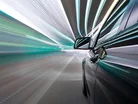Huawei: A Company Integral to the EV Ecosphere

In 2023, plug-in electric vehicles (PEVs) accounted for 37% of all automotive sales in China. In a country of 1.4 billion people, that's a lot of cars.
It’s therefore no wonder that China is the world's largest electric vehicle EV market, with the International Energy Agency stating China accounted for just under 60% of the 14 million EVs sold globally.
Such is the maturity of the market, you have a number of different EV brands that purely serve the Chinese Market. Alongside the American Tesla, and the more commonly-known Chinese automaker BYD, you have the lesser-Stelato, AITO, XPENG, BAIC Motor and Luxeed. What links these and many others, though? They all have underlying Huawei solutions.
How Huawei enhances EVs
Huawei’s relationship with EV manufacturers is vast: its solutions have been implemented in 10 models, and four vehicle manufacturers have a deep integration with their systems.
In fact, the company created the Harmony Intelligent Mobility Alliance (HIMA), which includes AITO, Luxeed, Stelato and Maextro where Huawei participates in product definition, design, marketing, user experience, quality control and provides intelligent solutions for the traditional automobile manufacturers.
This market penetration is because Huawei offers a raft of both hardware and software solutions available for EV manufacturers.
All aimed at improving vehicle performance or user experience, EV manufacturers have a choice to select from things like the DriveONE suite, with battery management system, which integrates big data and AI capabilities and is based on massive cloud data, to the EV ‘engine’ with its ePowertrain motor control unit; the VDC for breaks and suspension, a T-box for managing 3G/4G connectivity, and even the sound system or HarmonyOS console operating system in the cabin for enhanced user experience.
All these systems can be communicated with each other seamlessly via the Mobile Data Centre (MDC), with a latency of 200 milliseconds, significantly better than the industry average of 400 to 500 milliseconds.
But beyond the manufacturers who choose to install its solutions in their vehicles, Huawei solutions still benefit every EV in China. This is thanks to its extensive charging network installed across the country.
Launched in April 2023, Huawei has installed 30,000 of its planned 100,000 multi-compatible, hyper fast 600kw EV charging stations this year, that are capable of delivering 1km of charge a second (twice as fast as Tesla infrastructure).
Augmenting ADS and the future of driving
Beyond the current iterations of innovations underpinning the efficiency of EVs, Huawei is again looking ahead to the next developments to take place as vehicles become more connected.
Autonomous driving is promising to revolutionise transportation and urban mobility. These self-driving vehicles use a sophisticated array of sensors, cameras, radar, and AI to navigate roads without human intervention.
Currently, Huawei has already developed an Advanced Driving System (ADS) technology now implemented in several models of Chinese cars.
Onboard MDC’s benefit from access to Huawei's latest Ascend AI chipset, which is capable of up to 352 TOPS of computing power. This MDC can access and process data flows in real time from more sensors than has been previously possible, including cameras, millimetre wave radars, Lidar, and GPS, providing safer and more reliable computing support for autonomous driving systems.
This is important as, although Huawei ADS needs less data to “train” itself to operate a vehicle, the amount of sensor information intake for its Generalised Object Detection (GOD) tech is more, with Huawei having one of the few driving technologies on the market that harnesses three lidars per vehicle.
All this has meant that while many companies are still using ADS 2.0-like tech, Huawei has been racing ahead with the next level of driving experience already, this month announcing a ADS 3.0 upgrade for some models of HIMA members.
The testing of which system until that point saw the smart cars avoided more than 560000 possible collisions. Compatible in all scenarios and weather conditions, the solution can recognise obstacles on the road, passers-by, and allows cars to navigate complex urban environments nationwide automatically, with features such as lane switching.
Huawei’s solutions mean the cars with its ADS systems are moving towards Level 4 of autonomous driving.
Yet, working with its partners around the world, Huawei is using its capabilities in 5G to accelerate the arrival of autonomous driving and explore the capabilities of vehicles to communicate with other vehicles (V2V), infrastructure (V2I), pedestrians (V2P), and networks (V2N) with ultra-low latency.
All these innovative solutions and more can be witnessed at this year’s GITEX. From October 14 to 18, Huawei will be a Diamond Sponsor at the 44th GITEX GLOBAL 2024, one of the world's largest technology exhibitions.
With the theme of "Accelerate Industrial Digitalization and Intelligence", Huawei will launch a series of flagship products and solutions for the global enterprise markets, Reference Architecture for Intelligent Transformation, and rich innovative practices in digital intelligence in the global industry.
At the same time, Huawei will hold the Huawei Industrial Digital and Intelligent Transformation Summit 2024, dozens of forums, hundreds of talks and keynote speeches, exchanging thoughts with the industry.
At this exhibition, Huawei's booth is located at B10&B20, Hall 22, Dubai World Trade Center. It covers an area of more than 1400 square metres, with the focus on two themes: "Accelerate Industrial Digitalization and Intelligence" and "Leading Digital and Intelligent Infrastructure".
They are extending a welcome for all to visit the GITEX Global Huawei exhibition area to experience and join its journey of "Accelerate Industrial Digitalization and Intelligence".
Make sure you check out the latest edition of EV Magazine and also sign up to our global conference series - Sustainability LIVE 2024.
EV Magazine is a BizClik brand.


